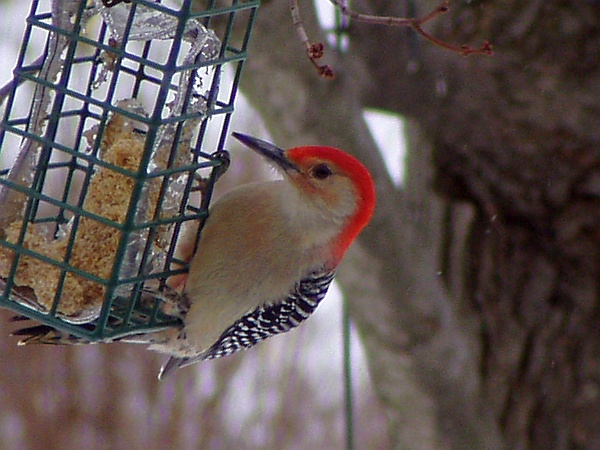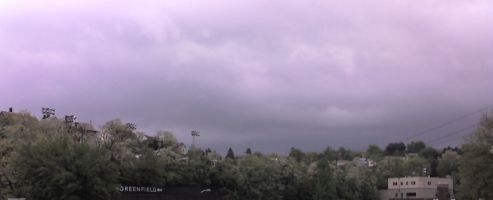
Tornadoes and cyclones kill people, but did you know that merely lousy weather kills birds?
The past few weeks have been miserable here in Pittsburgh. My cellphone picture from last Sunday tells it all. It has rained nearly every day, sometimes it’s windy, always it’s cold. It’s been bad for farmers and gardeners and anything that lives outdoors.
The birds who eat insects, such as chimney swifts and swallows, have taken it on the chin. Insects hide from the cold so there’s less to eat, but that’s precisely when the birds need more food to maintain their body temperature.
I haven’t seen as many chimney swifts and swallows as I’d expect at this time of year. The ones who haven’t arrived yet from the south are probably lucky. It’s been so miserable that a flock of chimney swifts gave up for the day at 3:00pm last Wednesday. I saw them spiral around a chimney and drop in to roost where they clung to the inside to wait out the cold. I hope the chimney was not fed by a furnace. We all had our furnaces on.
Bluebirds have suffered too. They lay their first eggs in April and fledge their first brood in May, feeding them insects from the fields around their nests. Len Hess reported on PABIRDS that 23 of out of 28 baby bluebirds died in the nest boxes he monitors in Westmoreland County. The young birds were healthy and doing fine the previous week but the cold and rain spelled disaster. The same was true for Fred Zahradnik’s bluebirds in the eastern part of the state where they experienced a nor’easter.
This morning there’s a break in the clouds. Tomorrow the weather is supposed to change, bringing sun and temperatures in the 60s and 70s for the weekend.
Thank goodness for all our sakes!
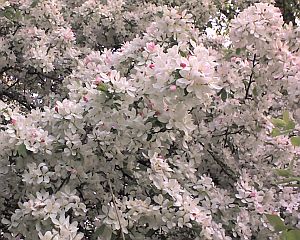 Last week the trees put on their best apparel, all decked out in flowers. The weather was fine – not cold like today. Here are some memories from last week’s beautiful weather, captured on my cell phone camera.
Last week the trees put on their best apparel, all decked out in flowers. The weather was fine – not cold like today. Here are some memories from last week’s beautiful weather, captured on my cell phone camera.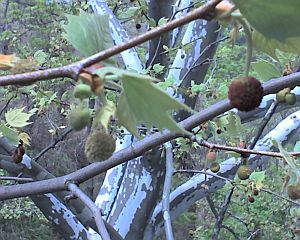 A London plane tree in Greenfield sporting red and green balls. The balls are covered with the tree’s tiny flowers. When the flowers are fertilized, the balls become seeds that break up and float away in the wind the following spring.
A London plane tree in Greenfield sporting red and green balls. The balls are covered with the tree’s tiny flowers. When the flowers are fertilized, the balls become seeds that break up and float away in the wind the following spring.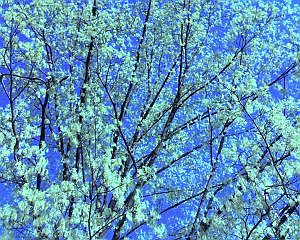
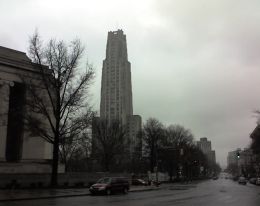 Weather: We had an east wind today – not good in this land where the prevailing wind is from the southwest. Eventually the wind dropped and it began to rain steadily. I took a picture at 5:00pm near the Cathedral of Learning. Dreary, dreary sky. Not a good day for watching birds.
Weather: We had an east wind today – not good in this land where the prevailing wind is from the southwest. Eventually the wind dropped and it began to rain steadily. I took a picture at 5:00pm near the Cathedral of Learning. Dreary, dreary sky. Not a good day for watching birds.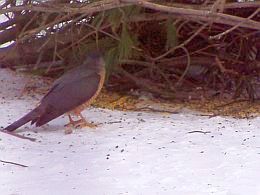 Another cold night in Pittsburgh. Tomorrow morning it’ll be only 10 degrees.
Another cold night in Pittsburgh. Tomorrow morning it’ll be only 10 degrees.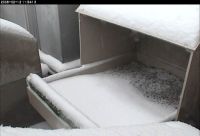 No birds anywhere. It’d been snowing since last night with 4″ on the ground and it still keeps coming. The snow is deep at the
No birds anywhere. It’d been snowing since last night with 4″ on the ground and it still keeps coming. The snow is deep at the 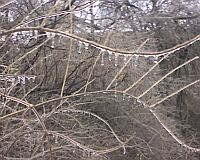 We had sleet and freezing rain overnight. Fortunately the ice was not very thick and by dawn the temperature rose so it’s merely raining now.
We had sleet and freezing rain overnight. Fortunately the ice was not very thick and by dawn the temperature rose so it’s merely raining now. 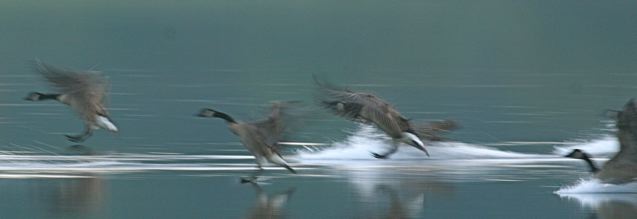
 For the past two days it has been “unseasonably warm” here in Pittsburgh, but to me it feels unnatural. The highs have been in the upper 60s, warmer than we keep our house at this time of year. This is even more remarkable because it was 13oF five days ago.
For the past two days it has been “unseasonably warm” here in Pittsburgh, but to me it feels unnatural. The highs have been in the upper 60s, warmer than we keep our house at this time of year. This is even more remarkable because it was 13oF five days ago.